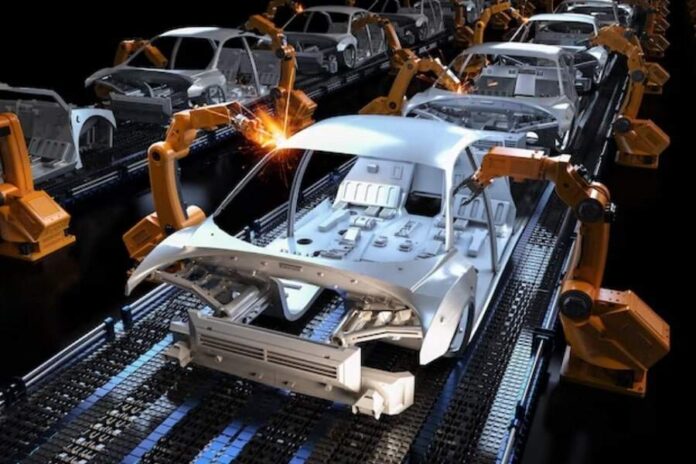The automotive industry relies heavily on metal castings to produce engines, chassis, transmission, and other critical vehicle components. Stainless steel casting has emerged as an indispensable process enabling automakers to manufacture durable, high-performance parts cost-effectively. This article explores the evolving landscape of stainless steel casting techniques powering new frontiers in automotive design and functionality.
A Brief History of Metalcasting
Metalcasting likely dates back over 5000 years, with early applications in creating decorative objects, tools, weapons, and religious idols. The process entails melting metals to a molten state and pouring them into molds to produce castings with intricate shapes and details. From the Bronze Age to the Industrial Revolution, innovations in metallurgy, molding, and casting propelled the production of cast metal parts on an industrial scale.
Modern metal casting enables high-volume manufacturing for applications across the automotive, aerospace, rail, and marine sectors, among others. Automakers rely extensively on metal castings in engine blocks, cylinder heads, transmission cases, wheels, and steering components. Over 90% of all manufactured goods incorporate one or more cast metal parts in some manner.
As vehicles become more sophisticated, the demand grows continually for complex, high-performance, and cost-effective metal components. Stainless steel casting has quickly emerged as an ideal solution for meeting exacting specifications while enabling radical innovation in automotive design.
Stainless Steel Casting Techniques
Stainless steel offers excellent corrosion resistance, durability, high temperature, and pressure tolerance alongside considerable cost savings versus milling or fabricating equivalent parts. Automakers utilize various casting techniques to manufacture stainless steel components that match the performance, safety, emissions, and aesthetic requirements of modern vehicles.
Traditional Casting Methods
Sand casting remains a popular stainless steel casting technique given its design flexibility, cost-effectiveness, and ability to scale production. The process uses bonded sand molds into which molten steel is poured to form the desired shapes. However, the molds wear quickly and cannot hold fine details accurately over several castings.
Investment casting offers higher accuracy and surface finish by using wax patterns coated in specialized ceramic slurries to create more durable molds. However, the multi-step process can slow down production timelines.
Die casting uses reusable steel molds capable of producing complex, high-tolerance castings at rapid rates. But die-cast parts are typically smaller and cheaper than sand castings. Limitations around maximum mold size and cost concerns impede the adoption of large stainless castings.
Innovative Casting Techniques
As stainless steel gains prominence in structural castings, chassis, drivetrain, and even decorative vehicle components, automakers increasingly demand innovative casting solutions.
Vacuum-assisted counter gravity casting, though originally developed over 50 years ago, continues seeing rapid adoption. The process mitigates oxide inclusions and porosity in safety-critical stainless parts via controlled air evacuation and bottom-up fill.
Semi-solid metal casting allows shaping alloys thixotropically at lower melting points – delivering castability akin to polymers with metallurgical benefits. Combined with 3D-printed molds and automation, the process facilitates small-batch production of complex stainless castings.
Automakers also utilize emerging techniques like centrifugal casting and squeeze casting to manufacture stainless steel cast parts with superior integrity. Customized robotic cells further integrate simulation, design, and rapid prototyping for continuous casting process improvements.
Key Advantages
Stainless steel casting enables automotive parts with:
- Excellent corrosion and heat resistance
- High strength-to-weight ratios
- Good wear resistance and noise-dampening
- Dimensional stability across extreme operating conditions
- Integrated/conformal cooling line placement
- Consolidated assemblies replacing multiple components
- Lower costs than fabricating or machining equivalent parts
Certain limitations around maximum part size, tooling costs, and relatively slower production rates persist. However, continual advances mitigate these constraints while expanding the design latitude for automakers.
Stainless Steel Castings in Automotive Innovation
Automakers rely extensively on stainless steel castings to manufacture critical drivetrain, chassis, and engine components where performance, safety, durability, and emissions compliance take precedence over costs.
Chassis, Suspension and Braking Components
Stainless steel casting produces reliable and durable parts ranging from control arms, trailing links, and steering knuckles to brake calipers, rotors, master cylinders, valves, and ABS modulators:
- Control arms engineered from high-strength stainless steel castings withstand extreme loads while resisting corrosion.
- Complex stainless cast brake calipers offer rigidity alongside fast heat dissipation critical to braking performance.
- Cast stainless steel brake rotors provide wear resistance for consistent all-weather braking.
Such chassis and braking components operate under high pressures, loads, and temperatures – making stainless steel casting the ideal manufacturing route.
Integrated Components and Lightweighting
Monolithic stainless castings help consolidate elaborate suspension components and mounting hardware into single parts – saving weight, costs, and assembly time while improving durability.
Cast stainless steel wheel hubs with integrated mounting flanges and caliper anchors eliminate the need for separate knuckles. Such solutions trim weight by over 20% while reducing components by 40%.
Powertrain and Exhaust Components
Modern engines subject stainless castings to extreme cylinder pressures, combustion temperatures, exhaustive emissions, and constant vibration. Key examples include:
- Turbocharger housings experience intense heat and stresses – making stainless steel casting the ideal choice over fabrications.
- Exhaust manifolds engineered from high-temperature, corrosion-resistant stainless castings maintain dimensional stability while withstanding years of extreme operating temperatures.
Motor housings, gearboxes, and other drivetrain components similarly rely on the durability and noise/vibration damping qualities of stainless steel castings.
In electric vehicles, battery packs often use thin-wall stainless steel structural castings too. Fabricated trays and enclosures struggle to match the durability besides proving costlier.
Lower Emissions and Improved Efficiency
Monolithic stainless steel exhaust components minimize leak paths and heat loss while dampening noise and vibration – helping meet tightening emissions norms.
Integrated oil channels and conformal cooling line placement in cast engine parts enhance thermal management – improving combustion efficiency.
Automotive Grade Stainless Steel Castings
Automotive components require stainless steel castings matching exacting standards on:
- High-temperature mechanical properties – tensile strength, ductility, and impact resistance
- Corrosion resistance across operating environments
- Cost-effectiveness – reduced processing and machining needs
- Dimensional stability under fluctuating pressures and temperatures
- Weldability/formability for additional fabrication and finishing
- Section thickness ranging from 2 mm to over 75 mm
Duplex and ferritic stainless steel grades like 2304, 2205, and Zeron100 alloy find widespread usage in automotive casting – offering excellent corrosion resistance and mechanical properties at relatively lower costs.
Nickel alloys like Monel K-500 further expand maximum operating temperatures and pressures for niche applications.
Technological Innovations and Trends
Automakers raising performance targets continually fuel innovation across the stainless steel casting supply chain – from emerging alloys and rapid prototyping to casting process improvements and automation.
Additive Manufacturing
3D printing or additive manufacturing (AM) helps create intricate sand molds and wax patterns – enabling small-batch production with quick design revisions. Printed molds with conformal cooling channels also assist in faster cycle times and superior castings.
Direct metal 3D printing further expedites prototyping cast parts in innovative alloys. Combining AM tooling and robotics facilitates rapid design validation cycles – accelerating new product development while minimizing costs.
General Motors recently showcased a 3D-printed stainless steel brake rotor with filtration integration – demonstrating the radical part consolidation opportunities.

Integrated 3D printed stainless steel brake rotor with filtration from GM
Robotic Casting Cells
Automated robotic cells lined with instrumentation transform stainless steel casting – optimizing changeover times, minimizing costs, and improving quality/consistency.
Data-driven analytics further help troubleshoot defects while predictive capabilities forecast potential issues across operations. Robotic automation also assists seamless tooling changes to enable rapid generational upgrades and flexible production.
Casting Process Simulations
Computer-aided simulations of mold filling, solidification, and cooling stages help foundries deliver innovative castings faster. Foundries a couple of simulation data with real-time visual casting monitoring to spot defects early while optimizing gating designs and process parameters.
Other Notable Trends
- Artificial intelligence and machine learning drive autonomous process optimization.
- Integrated part tracking via melt barcodes.
- Sustainable casting practices lowering emissions and waste.
- Design for casting guidelines assisting performance synergies across product development stages.
Continued innovation across the stainless steel casting supply chain empowers radical improvements in automotive functionality, efficiency, and aesthetics into the foreseeable future.
Success Stories and Industry Recognition
Innovative applications of stainless steel castings receive acknowledgment across various automotive awards and recognition programs.
Castings Enable Vehicle of the Year Award Winners
- Ford F-150 pickup trucks extensively utilize stainless castings in their engines, drivetrain, and chassis – assisting the 2024 Truck of the Year Awards.
- Vacuum-assisted stainless cast intake manifolds in BMW 3-series straight 6-cylinder engines help deliver responsive yet efficient performance – contributing to the 2023 Car of the Year Award.
- Die-cast stainless steel integrated battery pack structures prove critical to the durability and range of the Hyundai Ioniq EV crossover – assisting the 2022 Green Car Award.
Foundries Lauded for Casting Innovations
Automotive casting suppliers also gain recognition through industry awards programs.
- Supplier XYZ Foundry received the 2023 Innovation of the Year Award for a vacuum-assisted stainless steel casting cell with integrated inspection systems and rapid prototyping capabilities.
- Die-casting firm ABC Company won the 2022 Foundry Sustainability Award for 90% reuse/recycling of sand besides minimizing landfill waste and carbon emissions in stainless castings production.
Such awards validate continual foundry investments in process improvements – assisting the transition towards greener and more efficient manufacturing.
Challenges and Opportunities
While automotive applications for stainless steel castings accelerate, certain challenges around sustainability, coating technologies, and simulations persist alongside emerging opportunities.
Sustainability Considerations
Despite high recyclability, stainless steel production remains energy and resource-intensive – necessitating environmentally cleaner foundry practices through:
- Scrap reuse – limits iron ore and alloying elements mining
- Improved melting efficiencies via induction furnaces and dissolved gas controls
- Sand reuse – reduces landfill waste while minimizing raw sand quarrying
- Greener binders and coatings – eliminates phenols, acids, chromates
- Advanced filtration – lowers emissions
- Lighter castings – further assist vehicle fuel efficiency
Coatings and Surface Engineering
Certain stainless steel castings undergo additional coatings to enhance functional performance:
- Thermal spray coatings like zirconia resist wear and corrosion.
- Duplex treatments using nitrocarburizing and chromizing improve wear resistance and hardness.
- HVOF coatings minimize particulate emissions while maximizing bond strength.
More R&D into eco-friendly coatings resistant to hot corrosion and exhaust gases helps expand applications further.
Casting Process Simulation
While simulation assists foundries in accelerating product development, increased computational power and finer simulation granularity help enhance the:
- Predictions of solidification-related defects
- Optimization of gating and riser designs
- Mold-filling behavior assessments
- Structural and thermal stress analysis
- Effect of coatings and heat treatments
Cloud computing platforms enable remote multi-physics simulations for continuous process improvements.
Market Expansion Opportunities
Luxury vehicles aim to apply stainless steel castings more extensively for structural components, decorative trim, and brightwork – capitalizing on excellent finish and corrosion resistance.
Kinetic automotive sculpture projects also actively explore combining cast stainless with fabricated sheet metal forms and AM parts – opening niche growth areas.
Conclusion
This long-form piece explored the growing role of stainless steel casting in driving radical innovation across automotive design, performance, and sustainability dimensions.
We traced key examples demonstrating how stainless castings enhance efficiency, safety, and durability in critical powerplant, chassis, and braking systems – assisted by continual technological advancements in emerging casting techniques, alloys, coatings, and process improvements like automation and simulations.
Industry recognition for successful applications and foundry innovations further spotlights the momentum behind stainless steel casting proliferation throughout present and future vehicle architectures.
As automakers chase ever higher benchmarks around emissions, range, comfort, and aesthetics – high-integrity stainless steel castings shall persist playing an indispensable role in translating performance targets into reality through their high strength, design flexibility, and enduring corrosion resistance.







